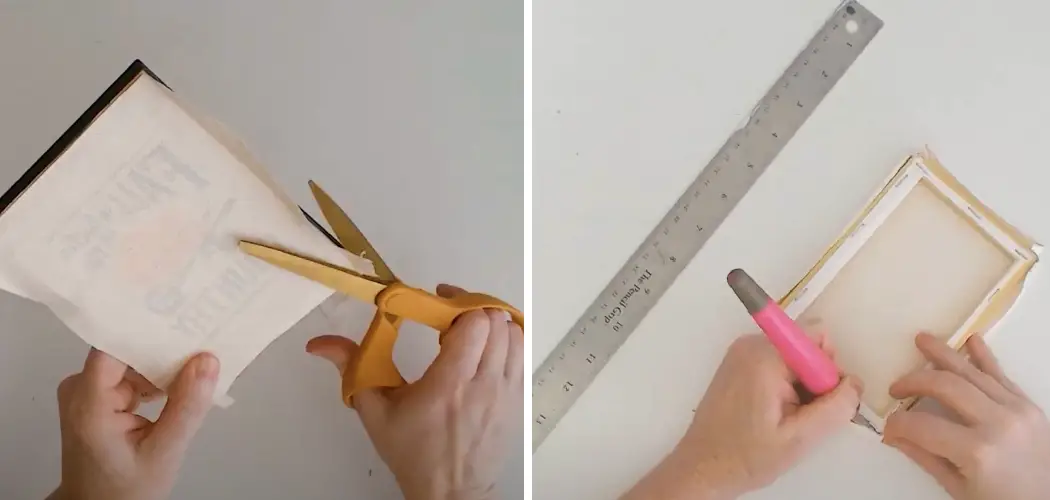Sublimation is a popular printing method used for creating high-quality, full-color, and durable prints on various surfaces such as t-shirts, mugs, phone cases, and even canvas. Unlike traditional printing methods like screen printing or heat transfer vinyl (HTV), sublimation allows for vibrant colors, detailed designs, and long-lasting prints.
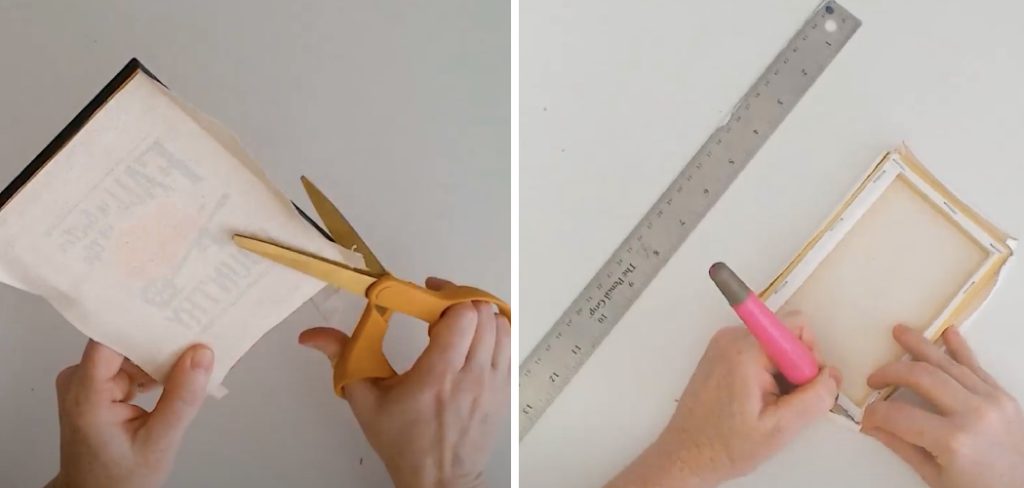
There are several advantages to sublimating onto canvas. First, it allows for high-resolution prints with vibrant colors and intricate details. This is because the ink is directly infused into the fabric of the canvas, resulting in a permanent and durable print that won’t fade or crack over time. In this blog post, You will learn in detail how to sublimate onto canvas.
Materials You Will Need
- A sublimation printer
- Sublimation ink or dye-sub ink
- Transfer paper
- Heat transfer machine (preferably a flat press)
- Scissors or cutting machine (optional)
- Protective tissue paper
- Canvas material
- Thermal tape or heat-resistant adhesive spray
- Tweezers (for handling the paper and canvas with care)
- Gloves (to protect your hands from the heat)
Step-by-step Instructions for How to Sublimate Onto Canvas
Step 1: Prepare Your Design
The first step in sublimating onto canvas is to create your design. This can be done using a graphic design software or by hand drawing on paper. Ensure that the design is the right size and resolution for the canvas you will be using.

Step 2: Print Your Design Onto Transfer Paper
Once you have your design ready, print it onto special transfer paper using a sublimation printer. Make sure to mirror the design so that when it is transferred onto the canvas, it will be in the correct orientation. Before starting the sublimation process, ensure that your canvas is clean and free of any dust or debris. You can use a lint roller or cloth to remove any particles from the surface.
Step 3: Place Transfer Paper Onto Canvas
Carefully place the transfer paper with the design facing down onto the canvas. Secure it in place using heat-resistant tape to prevent any movement during sublimation. Set your sublimation press to the recommended temperature and time for sublimating onto canvas. This will vary depending on the brand and type of press you are using.
Step 4: Preheat Your Canvas
Place a sheet of plain paper over the canvas and preheat it for a few seconds to remove any moisture from the surface. This will ensure that your design transfers smoothly onto the canvas. Once your canvas is preheated, carefully remove the plain paper and place a protective sheet on top of the design. Close the press and apply even pressure for the recommended time.
Step 5: Remove Heat and Pressure
Once the sublimation process is complete, turn off your press and release the pressure. Use heat-resistant gloves to carefully remove the transfer paper from the canvas while it is still hot. After removing the transfer paper, allow the canvas to cool down completely before handling it. This will prevent smudging or damage to your design.
Step 6: Trim Excess Paper
Once the canvas has cooled, carefully trim any excess transfer paper from around the edges of your design using scissors or a craft knife. To protect your design and add a glossy finish, you can apply a protective coating. This can be done using a clear acrylic spray or by applying a layer of heat-resistant laminate.
Once the protective coating has dried, your sublimated canvas is ready to hang and enjoy! The vibrant colors and high-quality finish will make your design stand out on any wall. So, now you know to sublimate onto canvas with ease and create beautiful custom pieces of art for your home or as gifts for others.
Safety Precautions for How to Sublimate Onto Canvas
- Before you begin the process of sublimation onto canvas, it is important to wear protective gear such as gloves and a mask. This will protect your hands and airways from any potential fumes or chemicals during the heating process.
- Make sure to read and follow all safety instructions included with your sublimation supplies. This will help ensure that you are using the materials correctly and safely.
- Keep any flammable materials away from the heat source during sublimation, as they can potentially catch fire if they come into contact with high temperatures.
- Always have a fire extinguisher nearby when working with sublimation. In the rare case of a fire, you can quickly put it out and prevent any serious damage.
- If you are using a heat press for sublimation onto canvas, be sure to never leave it unattended while in use. This is a safety hazard and can also result in damaged or ruined products if left too long.
- Allow the canvas to cool completely before handling it after sublimation. The heat from the process can cause burns if touched too soon.
- When disposing of used sublimation papers or any other materials, make sure to follow proper disposal guidelines as they may contain chemicals that are harmful to the environment.

In addition to these safety precautions, it is important to have a well-ventilated area when sublimating onto canvas. This will help prevent any buildup of fumes and ensure a safe working environment.
How Do You Maintain the Color Quality of Your Sublimated Canvas?
To ensure the longevity and vibrancy of your sublimated canvas, here are some tips to keep in mind:
- Avoid placing the canvas in direct sunlight or any areas with extreme heat, as this can cause fading over time.
- Use a UV-protective spray on your sublimated canvas to help prevent fading from exposure to light.
- Dust your canvas regularly to prevent buildup and to maintain the color quality. Make sure to use a soft, lint-free cloth or brush for this task.
- Avoid using harsh chemicals or cleaners on your sublimated canvas, as they can also cause fading or damage the print.
- Store your canvas in a cool, dry place away from any potential sources of damage.
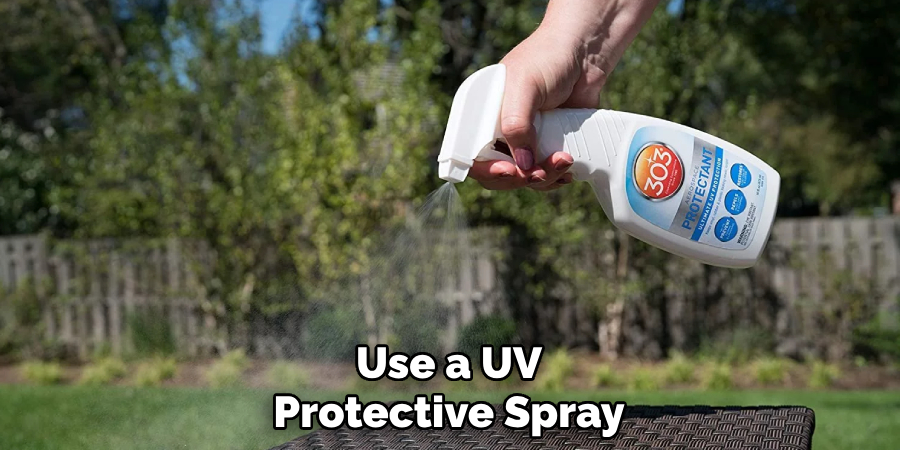
By following these precautions and maintenance tips, you can ensure that your sublimated canvas remains vibrant and beautiful for years to come. So go ahead and create stunning pieces with confidence, knowing that you are taking the necessary steps to maintain their quality.
What is the Best Heat Press Temperature for Sublimating Onto Canvas?
When it comes to sublimating onto canvas, there are several factors to consider in order to achieve the best results. One of these factors is the heat press temperature. Choosing the right temperature can greatly affect the quality and durability of your sublimated prints.
The ideal heat press temperature for sublimating onto canvas is between 375-385°F (190-195°C). This temperature range allows the sublimation ink to fully penetrate the canvas fabric, resulting in vibrant and long-lasting prints.However, it is important to note that different types of canvases may require slightly different temperatures.
For example, thicker or coated canvases may need a higher temperature to achieve the desired results. In addition to the heat press temperature, other factors such as pressure and time also play a crucial role in sublimation. It is recommended to use heavy pressure and a longer pressing time when sublimating onto canvas, as the fabric is thicker and requires more heat and pressure to fully transfer the ink.
How Can You Prevent Any Color Bleeding or Smudging While Sublimating Onto Canvas?
Sublimation is a popular printing technique that allows you to transfer colorful designs onto various materials, including canvas. This process involves using heat and pressure to turn solid dye particles into gas, which then embeds itself into the fabric fibers. As a result, the final print becomes permanent and vibrant.
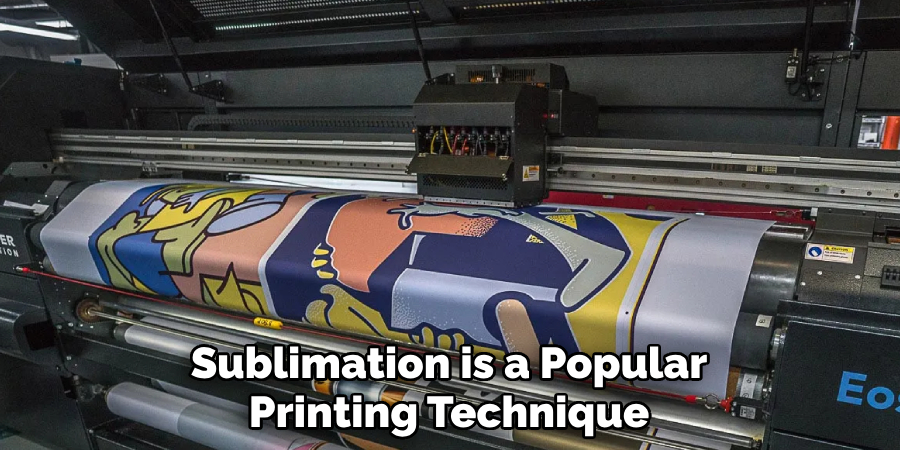
However, one common concern when it comes to sublimating onto canvas is the possibility of color bleeding or smudging. This can happen if the temperature, pressure, or time used for sublimation is not properly calibrated. To ensure that your sublimated canvas prints turn out perfectly every time, here are some tips to prevent any color bleeding or smudging.
1. Properly Adjust Temperature and Pressure
The key to preventing color bleeding and smudging is to maintain the right temperature and pressure during sublimation. The ideal temperature for sublimating onto canvas is usually around 385-400 degrees Fahrenheit, while the recommended pressure is between 40-60 psi. If your heat press machine has digital controls, make sure to calibrate them accurately according to your specific materials and design.
2. Increase Dwell Time
In some cases, a longer dwell time can also help prevent color bleeding or smudging. This refers to the amount of time that the heat press applies pressure and heat onto the canvas. The standard dwell time for sublimation is usually 45-60 seconds, but if you notice any smudging or bleeding, you may need to increase it by 5-10 seconds.
This will allow the ink to fully transfer onto the canvas, creating a more vibrant and permanent print.
3. Use High-Quality Materials
Another factor that can contribute to color bleeding or smudging is the quality of your materials. Make sure to use high-quality sublimation paper, ink, and canvas for best results. Cheap or low-quality materials may not be able to withstand the heat and pressure of sublimation, leading to color bleeding or smudging.

4. Test Prints
Before finalizing your design and printing it onto your canvas, it’s always a good idea to do test prints. This will allow you to make any necessary adjustments and ensure that the final print turns out perfectly. You can also use this opportunity to check for any potential issues with color bleeding or smudging and make the necessary tweaks.
By following these tips, you can prevent any color bleeding or smudging while sublimating onto canvas. Remember to always properly calibrate your heat press machine, use high-quality materials, and do test prints for optimal results.
Common Mistakes in Sublimation Printing
One of the benefits of sublimation printing is that it produces high-quality, professional-looking prints. However, just like any other printing method, mistakes and imperfections can still occur. In this section, we will discuss some common mistakes in the sublimation process and how to fix them.
1. Blurry or Fuzzy Prints
One of the most common mistakes in sublimation printing is getting blurry or fuzzy prints. This can happen due to a variety of reasons such as low-quality images, incorrect print settings, or poor transfer process. To fix this issue, make sure to use high-resolution images and adjust your print settings according to the material you are using.
Additionally, ensure that you are using the correct transfer paper and that your heat press is at the right temperature for the specific material.
2. Color Inconsistencies
Another common mistake in sublimation printing is getting color inconsistencies in your prints. This can happen when there is a mismatch between the colors on your screen and the actual print, or if there are issues with the color profiles used. To fix this, make sure to calibrate your monitor and use color management software. Additionally, check the profiles of your printer and ink to ensure they are compatible with each other.
3. Ghosting or Shadowing
Ghosting or shadowing occurs when the transferred image appears blurry or distorted due to movement during the heat press process. To prevent this, make sure that your heat press is clean and level, and that you are using the correct pressure for the material. You can also try placing a Teflon sheet or parchment paper between the transfer paper and substrate to prevent any movement.
Tips for Fixing Mistakes
1. Test Prints
It’s always a good idea to do test prints before committing to a final print. This will allow you to identify any potential issues and make adjustments before wasting materials.
2. Heat Press Adjustment
Make sure to regularly check and adjust your heat press settings, such as temperature, time, and pressure, for different materials. This will ensure that you get the best results every time.
3. Use High-Quality Materials
Using high-quality sublimation ink, paper, and substrates can help minimize mistakes and produce better prints overall.
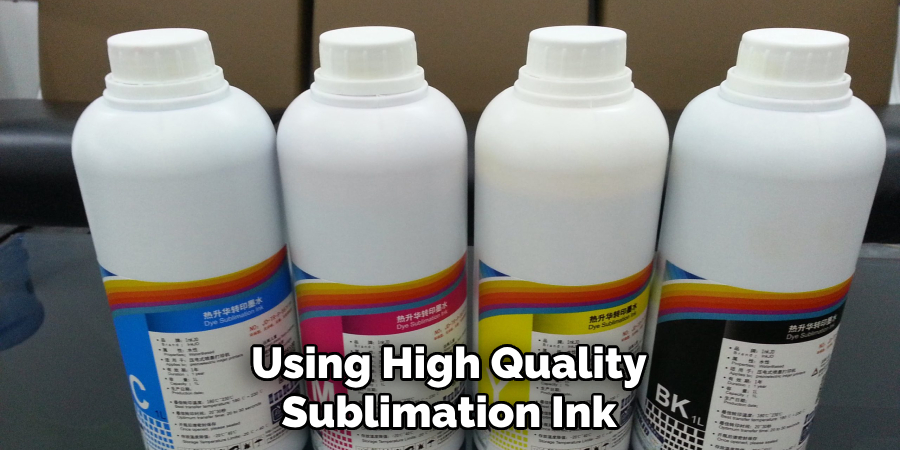
4. Practice Makes Perfect
Sublimation printing, like any other skill, takes practice to master. Keep experimenting with different materials, settings, and techniques until you find what works best for you.
Conclusion
In conclusion, sublimation printing is a versatile and easy method to transfer designs onto canvas. By following the steps outlined in this blog post, you can create high-quality and long-lasting prints on canvas that are perfect for home decor or personalized gifts.
One of the key advantages of sublimation printing is its ability to produce vibrant and detailed prints. This makes it an ideal technique for reproducing artwork or photographs on canvas.Additionally, the sublimation process ensures that the colors stay true and won’t fade over time. Furthermore, sublimation printing is a simple and straightforward process that can be easily done at home with the right equipment.
This makes it a cost-effective option for those who want to create custom canvas prints without breaking the bank. I hope this article has been beneficial for learning how to sublimate onto canvas. Make Sure the precautionary measures are followed chronologically.

